Q6:
AS & A Level Chemistry - 9701 Paper 1 2014 Winter Zone 2
Questions:
6/40

Topic: CH14 - AN INTRODUCTION TO ORGANIC CHEMISTRY
Solution
Solution is A

PRACTISE
Similar Questions

LEARN
Concepts with Sparky

More Questions from this Topic
Theory
CH14 - AN INTRODUCTION TO ORGANIC CHEMISTRY
Oxygen is a Group 16 element. (a) (i) Write equations for the following reactions. • sodium and oxygen • sulfur and oxygen $\text{.............
2024
 Winter
Winter
 Winter
Winter
 3
3
Theory
CH14 - AN INTRODUCTION TO ORGANIC CHEMISTRY
Cobalt, rhodium and iridium are metals in the same group of the Periodic Table. (a) The shorthand electronic configuration of cobalt is [Ar]3d\(^7\)4s...
2024
 Winter
Winter
 Winter
Winter
 2
2
Theory
CH14 - AN INTRODUCTION TO ORGANIC CHEMISTRY
Chlorine is one of the elements in Group 17 of the Periodic Table.(a) (i) Describe the colours of the Group 17 elements, chlorine to iodine, at room t...
2024
 Winter
Winter
 Winter
Winter
 3
3
Theory
CH14 - AN INTRODUCTION TO ORGANIC CHEMISTRY
CH_3(CH_2)_5CHBrCH_3 exists as a pair of stereoisomers.(a) Draw the three-dimensional structures of the two stereoisomers of CH_3(CH_2)_5CHBrCH_3. R c...
2024
 Summer
Summer
 Summer
Summer
 2
2
Theory
CH14 - AN INTRODUCTION TO ORGANIC CHEMISTRY
(a) \( NH_3(g) \) reacts with \( HCl(g) \) to produce \( NH_4Cl(s) \), as shown.\[ NH_3(g) + HCl(g) \rightarrow NH_4Cl(s) \]Draw a diagram to show the...
2024
 Summer
Summer
 Summer
Summer
 2
2
Theory
CH14 - AN INTRODUCTION TO ORGANIC CHEMISTRY
(a) P, Q, R and S show stereoisomerism.Complete Table 4.1 by identifying with a tick (✓) the type of stereoisomerism that each molecule shows.The ty...
2024
 Spring
Spring
 Spring
Spring
 5
5
Theory
CH14 - AN INTRODUCTION TO ORGANIC CHEMISTRY
(a) V shows stereoisomerism.(i) Explain what is meant by stereoisomerism.................................................................................
2024
 Summer
Summer
 Summer
Summer
 2
2
Theory
CH14 - AN INTRODUCTION TO ORGANIC CHEMISTRY
Cobalt, rhodium and iridium are metals in the same group of the Periodic Table.(a) The shorthand electronic configuration of cobalt is [Ar]3d^7 4s^2.(...
2024
 Winter
Winter
 Winter
Winter
 3
3
Theory
CH14 - AN INTRODUCTION TO ORGANIC CHEMISTRY
Propanone, $\text{CH}_3\text{COCH}_3$, is an important organic reagent. Fig. 4.1 shows some reactions of propanone and its derivatives.(a) Reaction 1 ...
2024
 Winter
Winter
 Winter
Winter
 3
3
Theory
CH14 - AN INTRODUCTION TO ORGANIC CHEMISTRY
Ruthenium and osmium are transition metals below iron in Group 8 of the Periodic Table.(a) Two different complex ions, $X$ and $Y$, can form when anhy...
2024
 Spring
Spring
 Spring
Spring
 2
2
More Questions from year 2014
MCQ
CH8 - REACTION KINETICS
The Boltzmann distribution for a gas at constant temperature is shown below. If the temperature of the gas is reduced by 10°C the graph changes shape...
2014
 Summer
Summer
 Summer
Summer
 2
2
MCQ
CH2 - ATOMIC STRUCTURE
Which compound has the greatest total number of lone pairs of electrons in the valence shells of all of its atoms?
2014
 Summer
Summer
 Summer
Summer
 2
2
MCQ
CH5 - CHEMICAL ENERGETICS
A reaction pathway diagram is shown. Which enthalpy change could the diagram not apply to?
2014
 Summer
Summer
 Summer
Summer
 3
3
MCQ
CH2 - ATOMIC STRUCTURE
Use of the Data Booklet is relevant to this question.The most common ion-molecule reaction in gas clouds of the Universe is as shown.$$\text{H}_2(g) +...
2014
 Summer
Summer
 Summer
Summer
 2
2
MCQ
CH6 - ELECTROCHEMISTRY
The electrolysis of brine using the diaphragm cell is an important industrial process. What happens at the anode?
2014
 Summer
Summer
 Summer
Summer
 2
2
MCQ
CH5 - CHEMICAL ENERGETICS
Hydrazine, $\text{N}_2\text{H}_4$, is used as a rocket fuel because it reacts with oxygen as shown, producing 'environmentally friendly' gases.$\text{...
2014
 Summer
Summer
 Summer
Summer
 2
2
MCQ
CH4 - STATES OF MATTER
A 10.0 cm^3 bubble of an ideal gas is formed on the sea bed where it is at a pressure of 2020 kPa. Just below the sea surface the pressure is 101 kPa ...
2014
 Summer
Summer
 Summer
Summer
 2
2
MCQ
CH3 - CHEMICAL BONDING
Four substances have the physical properties shown in [Table_1].Which substance is an ionic solid?
2014
 Summer
Summer
 Summer
Summer
 2
2
MCQ
CH5 - CHEMICAL ENERGETICS
The enthalpy change of formation of $\text{Mn(NO}_3)_2(\text{s})$ is $-696\text{ kJ mol}^{-1}$.The enthalpy change of formation of $\text{MnO}_2(\text...
2014
 Summer
Summer
 Summer
Summer
 2
2
MCQ
CH3 - CHEMICAL BONDING
X is an element in Period 2. In which fluoride is the F−X−F angle the largest?
2014
 Summer
Summer
 Summer
Summer
 2
2




 Share
Share




 Previous
Previous




